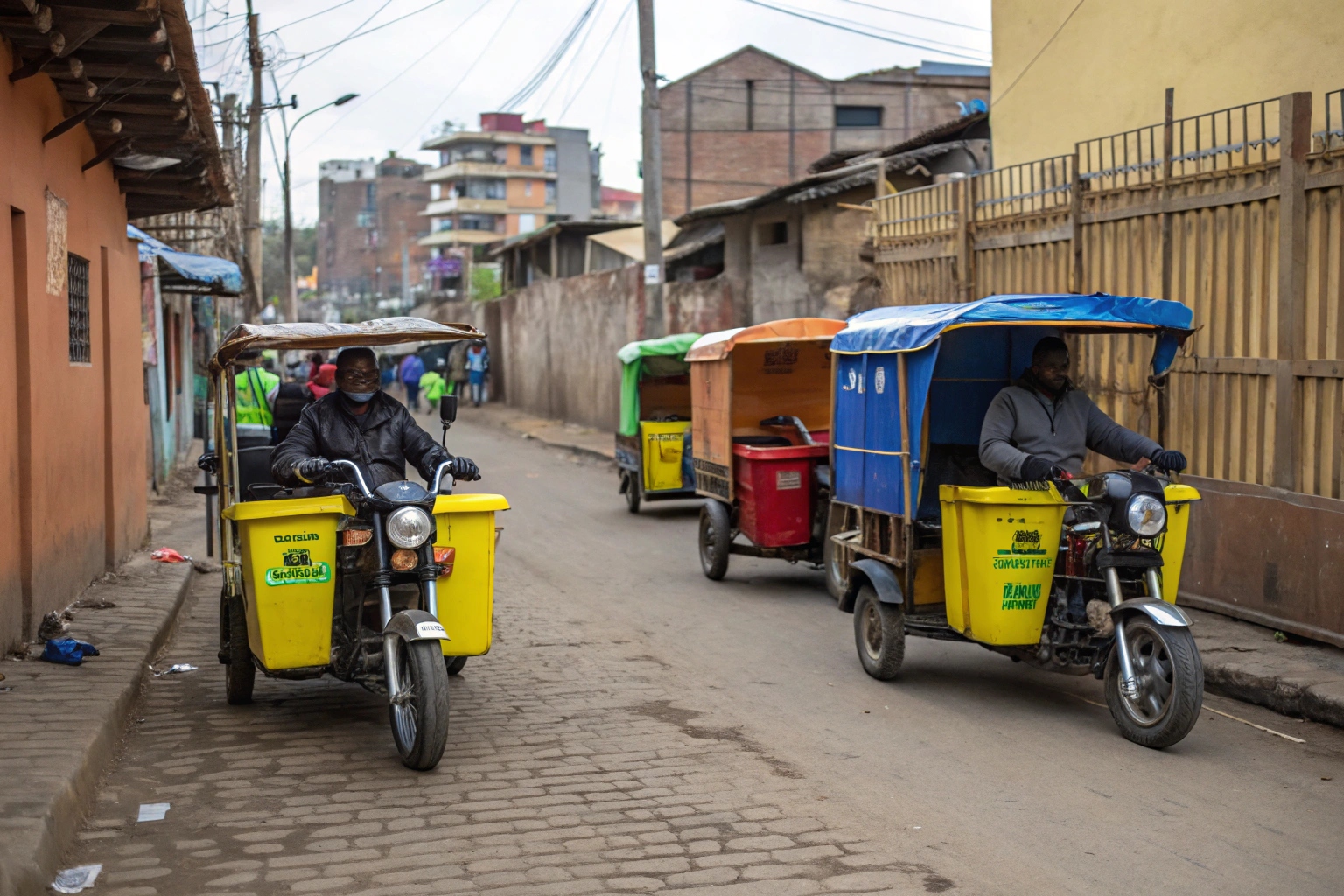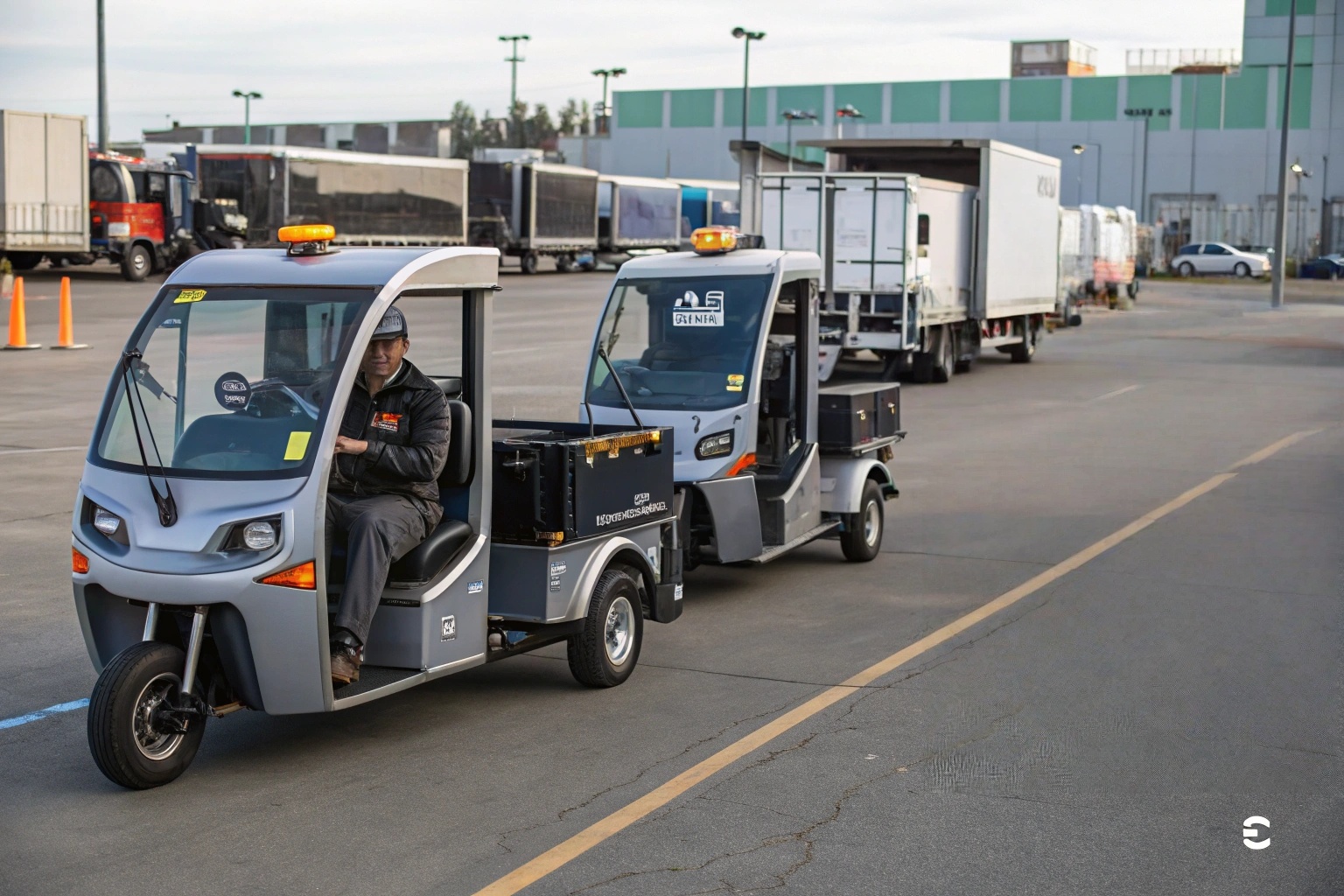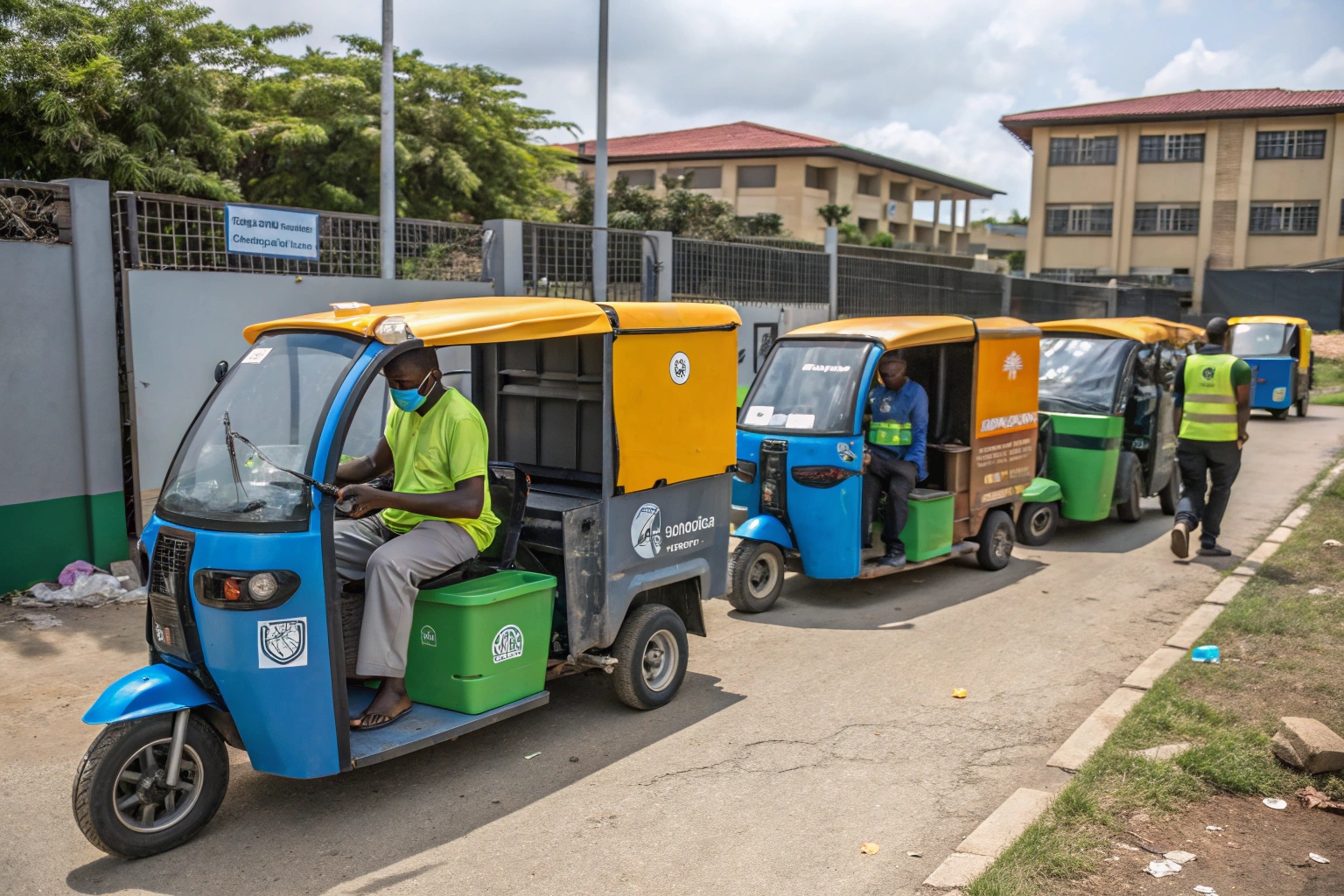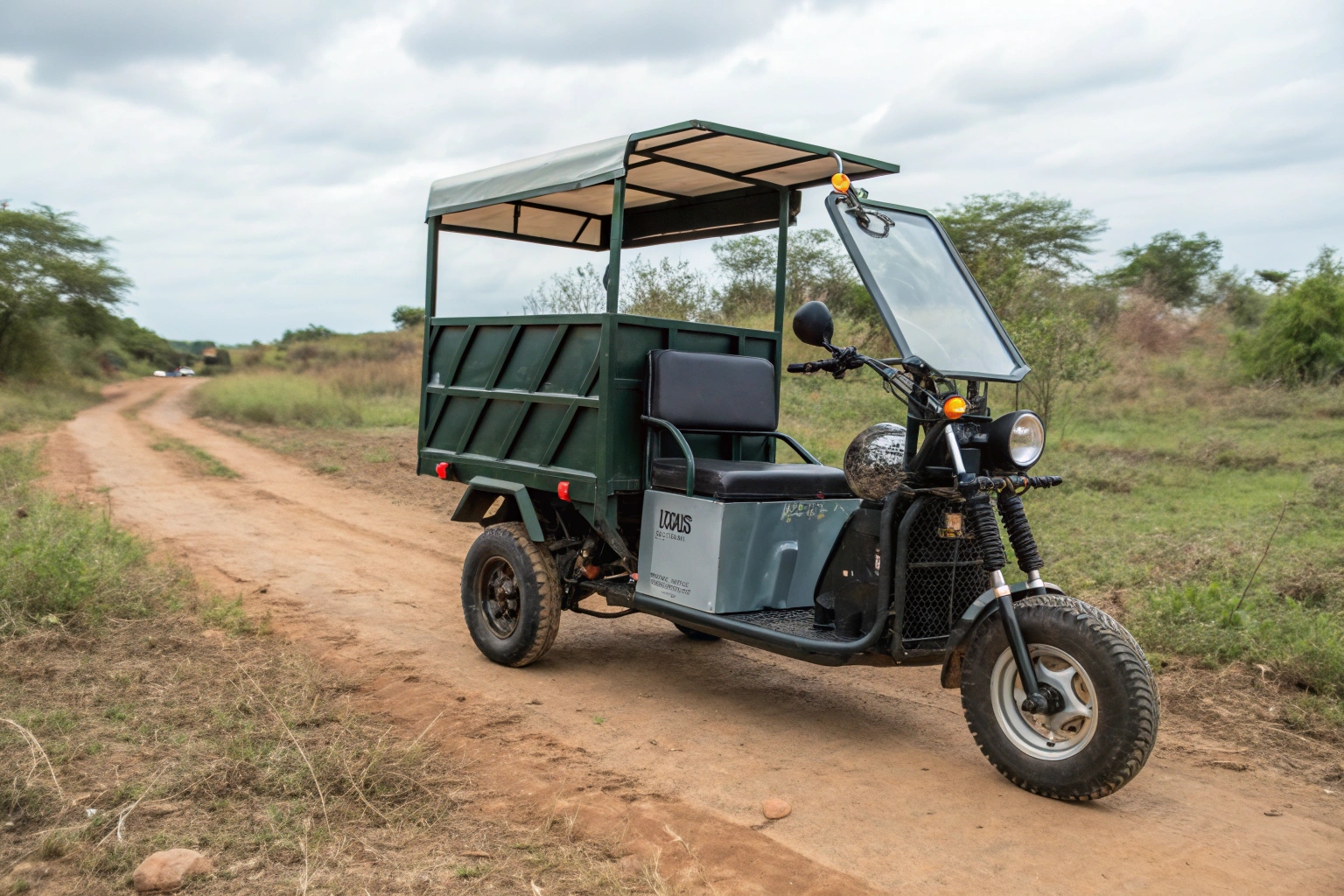Struggling with waste collection in tight urban spaces? Large trucks can't reach everywhere, creating health risks. Electric garbage tricycles are the smart, nimble solution for modern African cities.
Electric garbage tricycles are ideal for last-mile waste collection in Africa because of their compact size, maneuverability in narrow streets, and significantly lower operational costs compared to traditional garbage trucks. They are a practical fit for the continent's unique urban and economic landscapes.

I’ve seen a big increase in orders for electric garbage trikes from clients across Africa, from Morocco to South Africa. At our factory, we’re building more of these units than ever before. This isn’t just a trend; it’s a practical shift driven by real needs on the ground. To understand why these vehicles are becoming so essential, we need to look at the specific problems they solve. This change is happening for very clear reasons that impact city budgets, local jobs, and public health.
What Makes Electric Garbage Tricycles Suitable for African Urban Environments?
Your city’s garbage trucks are too big for narrow alleys. This leaves waste piling up in hard-to-reach neighborhoods. Electric trikes are small and agile, easily solving this problem.
Electric garbage tricycles are perfectly suited for African cities because their small size and tight turning radius allow them to navigate congested streets and informal settlements where large trucks cannot go. This makes door-to-door collection possible in almost any neighborhood.

When importers from places like Lagos or Kampala talk to me, their biggest challenge is always access. Traditional garbage trucks are wide and need a lot of space to turn. They simply can’t fit down the densely packed lanes that define many urban communities. This is where the triciclo elétrico becomes a game-changer. From my experience building these vehicles, I know we design them specifically for this purpose.
Size and Maneuverability
The core advantage is the vehicle's footprint. An electric trike can get through gaps that a truck could never attempt. This is critical for what is often called "last-mile" collection—getting the waste from the household bin to a larger collection point. One person can drive the trike right up to the door, collect the waste, and move on to the next house quickly. This level of service is impossible with larger vehicles, which often rely on residents bringing their trash to a central, often distant, location.
Comparison: Electric Trike vs. Garbage Truck
| Recurso | Triciclo elétrico de lixo | Conventional Garbage Truck |
|---|---|---|
| Typical Width | 1.0 - 1.2 meters | 2.5+ meters |
| Raio de giro | ~3 meters | 8-12 meters |
| Access | Narrow alleys, unpaved paths | Main roads only |
| Operation | 1 person | 2-3 person crew |
This difference in accessibility is not just a convenience; it is fundamental to achieving comprehensive waste collection and improving public sanitation in rapidly growing cities.
What Operational Cost Advantages Do Electric Trikes Offer in African Waste Projects?
Municipal budgets are always tight. The high cost of fuel and maintenance for large garbage trucks eats up funds. Electric tricycles slash these costs, freeing up money for other services.
Electric trikes offer huge cost savings. They eliminate fuel expenses, which are often a project's biggest cost. They also require less maintenance and can be operated by a single person, reducing labor costs by up to 50% compared to a typical truck crew.

Every time I discuss a potential government or NGO project, the conversation quickly turns to the custo total de propriedade. The initial purchase price is important, but the real savings come from day-to-day operations. Fuel prices across Africa can be volatile and expensive. A fleet of diesel trucks becomes a massive financial burden for any city council. We've run the numbers with our clients many times, and the results are always compelling.
Fuel vs. Electricity
The most obvious saving is fuel. Charging an electric tricycle overnight costs a fraction of what it takes to fill a diesel truck's tank for a day's work. The electricity is not only cheaper but also has a more stable price. This predictability is a huge benefit for anyone managing a long-term budget.
Labor and Maintenance Savings
A standard garbage truck needs a driver and at least one or two loaders. An electric trike only needs one operator who both drives and loads. This simple change can cut labor costs in half. Furthermore, electric vehicles have far fewer moving parts. There are no oil changes, no complex engine repairs, and fewer things that can break down. This means less downtime and lower maintenance bills.
| Fator de custo | Triciclo elétrico de lixo | Caminhão de lixo pequeno |
|---|---|---|
| Daily Energy/Fuel Cost | $0.50 – $1.50 | $20 – $40+ |
| Required Crew Size | 1 operator | 2-3 people (driver + loaders) |
| Manutenção de rotina | Brakes, tires, battery check | Engine oil, filters, transmission |
| Operator Training | Simple, like a scooter | Requires special license |
For a sanitation project, these combined savings mean the initial investment in an electric trike fleet can be paid back very quickly. It makes modern waste management affordable for more communities.
How Are African Governments and NGOs Integrating Electric Garbage Trikes?
Governments want to innovate, but big projects are risky. They see the pollution and cost of old trucks but hesitate. E-trike pilot projects offer a low-risk, high-impact first step.
Governments and NGOs often start with pilot programs. They deploy a small fleet of electric trikes in a specific district to prove their effectiveness. These projects are often supported by international partners like the UN-Habitat or clean-tech donor funds.

We are seeing a clear pattern in how these vehicles are adopted. It rarely starts with a massive, city-wide order. Instead, it begins with a focused, localized initiative. A client from a municipal authority in Tanzania recently told me they secured funding from a European donor to launch a 20-unit pilot project in one of the city's busiest markets. Their goal is to collect data on cost savings and operational efficiency before proposing a larger rollout. This is a smart and common strategy.
Pilot Programs and Donor Funding
These pilot projects are the key. They allow city managers and sanitation officials to see the trikes in action within their own local context. They can measure the performance, get feedback from operators and residents, and build a strong case for expanding the program. Organizations like WaterAid and the UNDP have backed similar initiatives because they align perfectly with sustainable development goals (SDGs) for clean cities and climate action.
Local Assembly and Job Creation
Another important angle is local economic development. We often ship our electric trikes as SKD (Semi-Knocked-Down) or CKD (Completely-Knocked-Down) kits. This means the final assembly is done in the destination country. This model does two things: it reduces import taxes and shipping costs, and more importantly, it creates local jobs in assembly and maintenance. A distributor in Kenya we work with set up a small workshop to assemble our trikes, employing local technicians. This approach turns a simple vehicle purchase into a community investment. It's a powerful selling point for any government project.
What Features Should African Buyers Prioritize When Choosing Electric Garbage Trikes?
Not all electric trikes are the same. Buying a model designed for smooth city roads can be a disaster on rough terrain. Choosing the wrong features leads to a wasted investment.
Buyers in Africa must prioritize durability. This means strong suspension for unpaved roads, rust-resistant treatment for humid climates, and simple, easy-to-repair components. Practicality, like using lead-acid batteries that can be sourced locally, is often more important than the latest technology.

When a new buyer contacts me, my first questions are always about their local conditions. Where will the trike be used? What are the roads like? What's the climate? The answers determine how we should build their vehicle. A trike destined for a dusty, inland city in Nigeria needs different specifications than one going to a humid, coastal city like Mombasa. At our factory, we can customize almost everything to ensure the vehicle survives and performs.
Built for Local Roads and Climate
The reality of many African roads is that they are rough and unpaved, especially in the areas where these trikes are most needed. A weak frame or standard suspension will not last. We reinforce the chassis and use heavy-duty shock absorbers to handle the stress. For coastal areas or places with heavy rainfall, we apply anti-rust treatments like electrophoresis to the frame and use materials like stainless steel or durable plastic for the cargo bin. These details make the difference between a trike that lasts five years and one that breaks down in six months.
Battery Choice: Practicality Over Hype
While lithium batteries offer longer range and are lighter, lead-acid batteries are still the most practical choice for many of our African clients. Why? Because they are cheaper, widely available, and any local battery shop or mechanic knows how to handle them. If a lithium battery fails, finding a replacement can be difficult and expensive. A dead lead-acid battery can be swapped out easily and affordably, minimizing vehicle downtime.
| Feature Check | Why It's Essential for Africa | Our Factory Recommendation |
|---|---|---|
| Suspensão | Handles unpaved roads and heavy loads. | Heavy-duty front and rear shocks. |
| Frame Material | Resists corrosion from humidity and rain. | Electrophoresis-coated steel frame. |
| Tipo de Bateria | Easy to source, repair, and replace. | High-quality, deep-cycle Lead-Acid. |
| Cargo Box | Must withstand wet waste and cleaning. | Thickened steel or plastic dumper bin. |
| Waterproofing | Protects controller and motor from rain. | Sealed controller and waterproof connectors. |
Focusing on these practical, robust features ensures that the vehicle is a reliable workhorse, not a sensitive piece of equipment.
Conclusão
Electric garbage tricycles are a practical, affordable, and effective solution for modernizing waste management in Africa. They offer a clear path to building cleaner, healthier, and more efficient cities.

